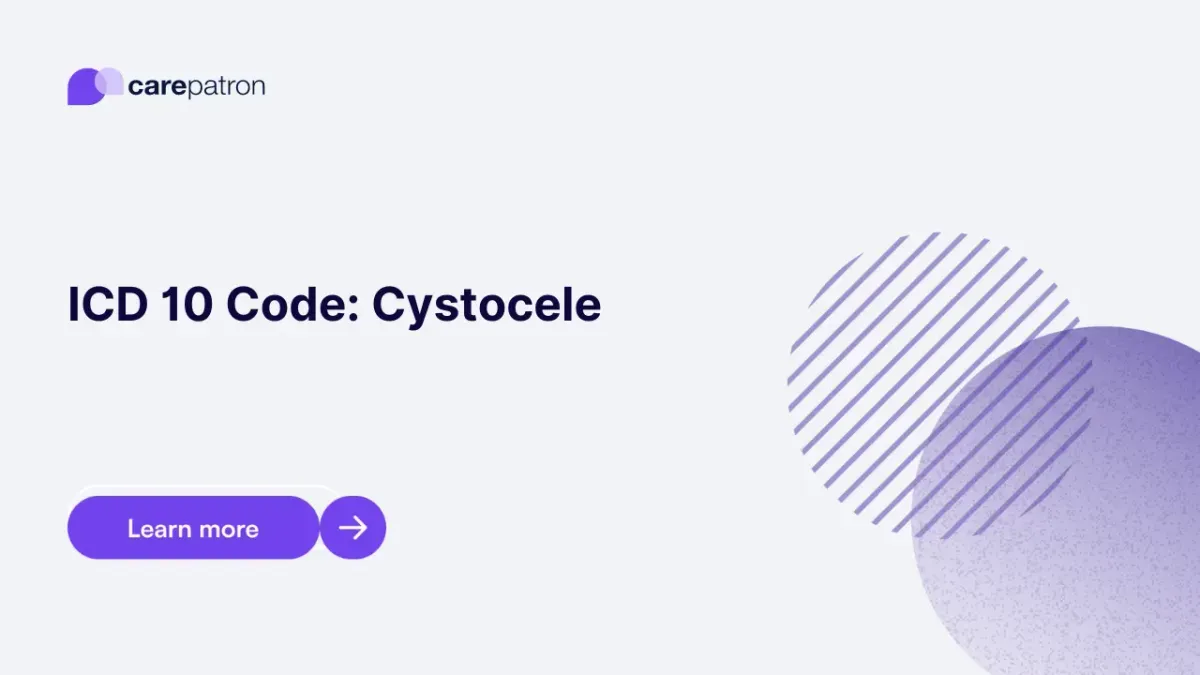
Cystocele ICD-10-CM Codes | 2023
Read this short guide to learn about Cystocele ICD codes you can use
Use Code
Commonly asked questions
They need to take note of the following signs/symptoms:
- If they feel or see something bulging through the vaginal opening
- If they go to the bathroom more than usual and have difficulty emptying their bladder
- If they have difficulty inserting the likes of tampons and menstrual cups
- If they feel pain and heaviness in the pelvic area
- If they frequently get urinary tract infections
Urologists and gynecologists will conduct physical examinations, urodynamic testing, and cystoscopies.
Conservative treatment involves maintaining a healthy weight, avoiding heavy lifting, and kegel exercises (which involve tightening pelvic floor muscles).
Some might resort to placing a pessary device in the vagina to hold the bladder in place.
For severe cases of cystoceles, performing anterior colporrhaphy might be the best choice. This surgical procedure returns the bladder to its original position and tightens the muscles to hold it.
EHR and practice management software
Get started for free
*No credit card required
Free
$0/usd
Unlimited clients
Telehealth
1GB of storage
Client portal text
Automated billing and online payments
